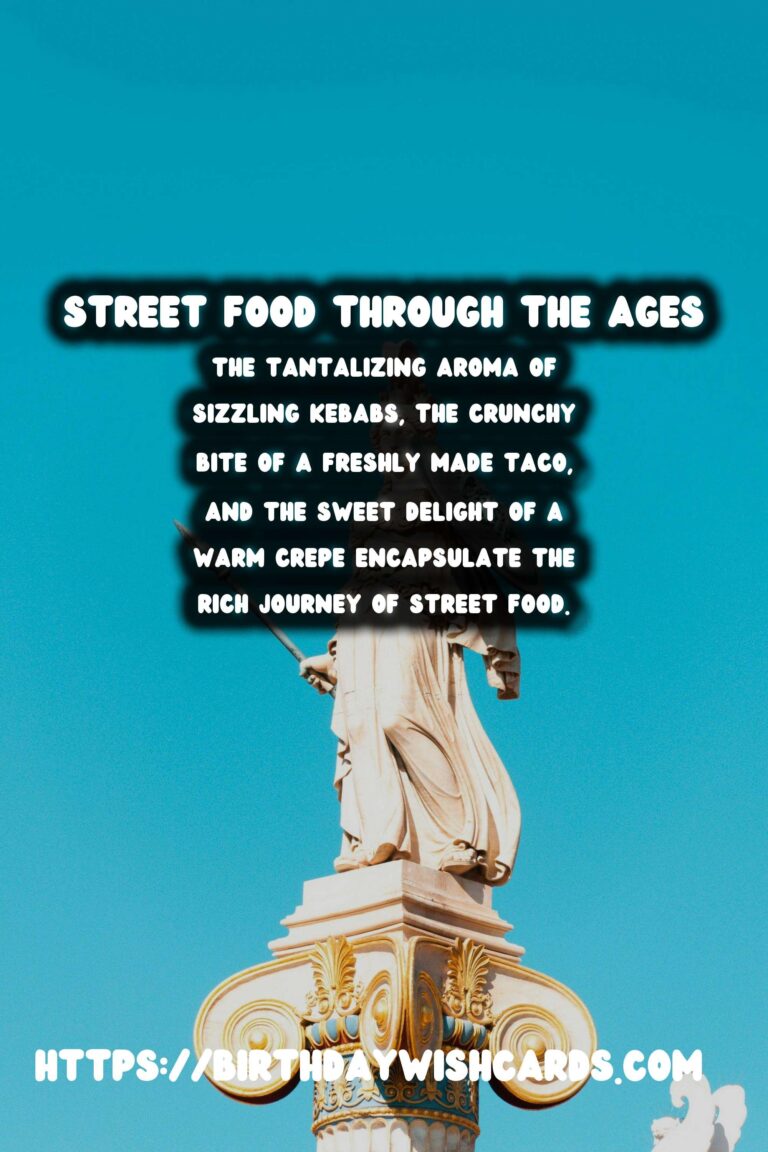
The tantalizing aroma of sizzling kebabs, the crunchy bite of a freshly made taco, and the sweet delight of a warm crepe encapsulate the rich journey of street food, which dates back thousands of years. Street food – simple fare enjoyed by common folk and travelers alike – has been an integral part of urban life across the world.
This article traces street food’s roots from ancient civilizations to its contemporary iteration, celebrating its role in fostering community bonds and culinary innovation.
Street Food in Ancient Civilizations
In ancient Rome, street vendors were commonplace, offering quick and affordable meals to citizens bustling through markets and forums. Typical offerings included bread, porridge, and wine. Similarly, in ancient China, vendors sold noodles and dumplings, food items that remain popular today.
The genesis of street food can also be seen in the age-old bazaars of the Middle East, where small stalls sold everything from succulent meats to sweet pastries. Notably, the diversity in street offerings across regions was influenced by local tastes, available ingredients, and cultural practices.
Medieval to Renaissance Innovations
During the medieval period, European street vendors sold ready-to-eat pies, which catered to the needs of travelers and urban workers. As global exploration flourished during the Renaissance, spices and cooking techniques traveled across countries, enriching street cuisine with bold, new flavors.
Food stalls became an essential part of cities like Istanbul and Paris, where bustling marketplaces allowed for true culinary exchanges and experimentation.
Street Food in the Industrial Age
The industrial revolution marked a pivotal moment for street food. Urbanization brought massive populations to cities who needed quick, convenient meals. Vendors adapted by marketing more portable and affordable options like hot dogs in the United States and fish and chips in Great Britain.
Additionally, this period witnessed the evolution of the food cart, with vendors wheeling around food to optimal selling spots.
The Global Street Food Renaissance
The late 20th century ushered in a global appreciation for street food. Visitors from developed nations marveled at the tantalizing offerings of street vendors in Asia, Africa, and South America, propelling street food into the global culinary spotlight.
Today, city streets worldwide narrate stories through food, where the vibrant stalls serve as cultural melting pots and socio-economic equalizers, providing sustenance and employment opportunities.
The Essence and Future of Street Food
Street food represents more than sustenance; it is a celebration of culture, a nurturing ground for culinary fusion, and a testimony to the enduring human spirit of innovation and resilience.
As cities continue to grow and diversify, street food is poised to adapt, bringing yet more flavors and innovations to our bustling urban centers.
With its rich history and continued evolution, street food will forever hold a cherished place in the heart of culinary tradition.
The tantalizing aroma of sizzling kebabs, the crunchy bite of a freshly made taco, and the sweet delight of a warm crepe encapsulate the rich journey of street food. Street food – simple fare enjoyed by common folk and travelers alike – has been an integral part of urban life across the world.
#StreetFood #CulinaryHistory

